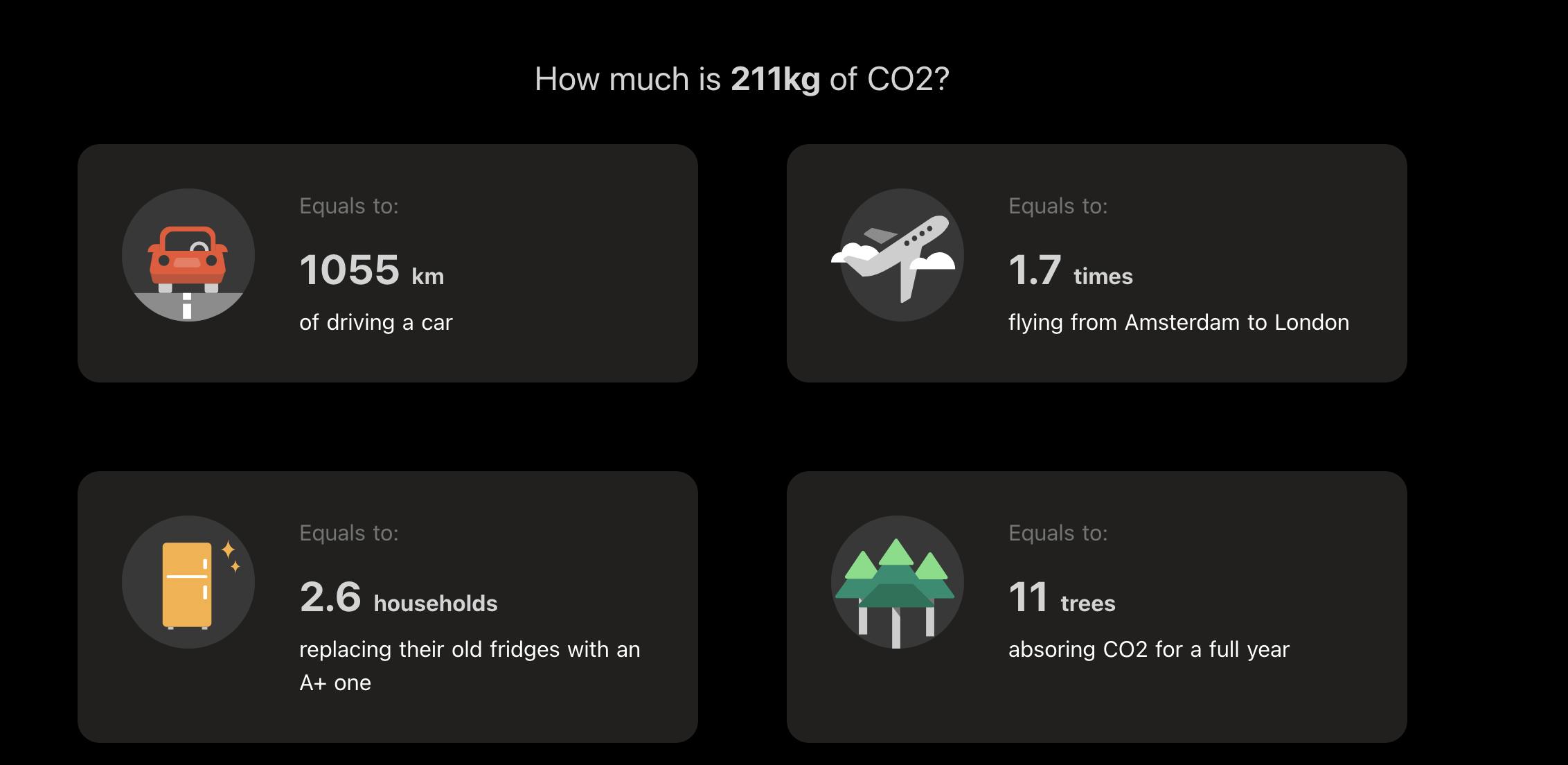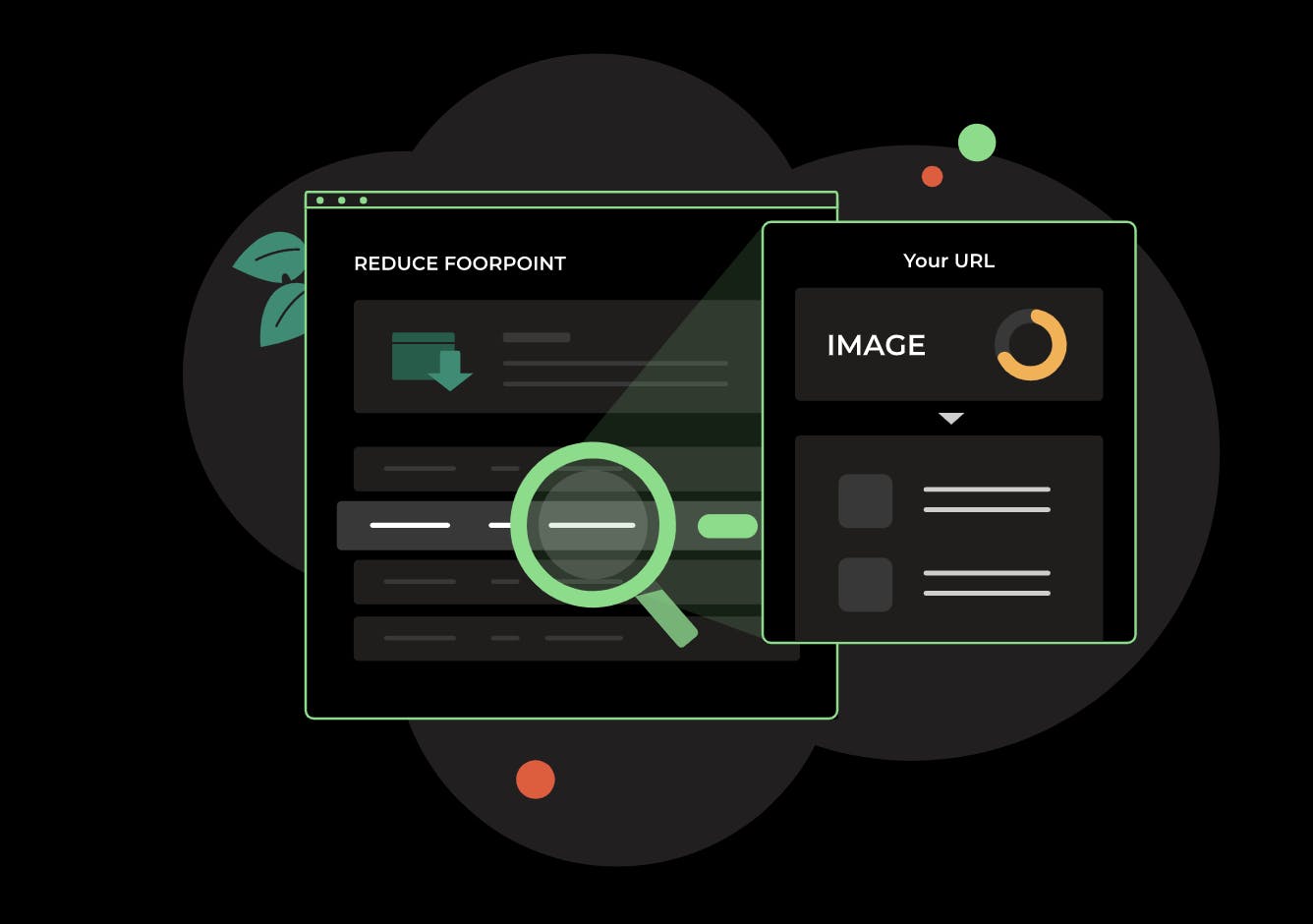Why you should care about the CO2 emissions of your website?
By Lieve Kramer
Wait, what? My website has something to do with the climate and CO2 emissions? You might have guessed the answer: yes. Simply said, the data traffic to and from your server costs electricity. The internet alone consumes as much energy as Great Britain, check Nature for the full article. This makes your website a part of the climate problem – but, and that is the good news, you can also be a part of the solution!
Hence, if your company has an online presence, you should care; since many of your customers care.
In this post we’ll define the carbon footprint of websites, explain the calculation of the carbon footprint of websites, and provide an overview of why you should care.
What is the carbon footprint of your website?
The carbon footprint of a website is measured by the energy that it consumes. Every webpage visit results in data traffic to and from the website’s server. The average website produces 1.76g of CO2 for every page view, check the full article by Andrae and Edler. A complex webpage with video and high-res pictures will require more data traffic, hence more energy per visit. For a website with a monthly average of 10,000-page visits, the energy consumption generates an annual emission of 211 kg CO2. That equals 1055 km of driving a car.

Why is the Carbon Footprint of Your Website Important?
Every day about 4.6 billion people use the internet. According to a 2018 study by Nature, the use of the Internet in 2030 is projected to consume 21% (!) of all generated electricity and the IT industry will then be responsible for 5.5% of global emissions. That puts the IT carbon footprint on the same level as the aviation industry’s emissions from fuel. Knowing that the 2020 COVID-driven surge made the internet traffic go up by more than 40%, it is high time our innovations focus on the internet and its climate consequences.
On top of that, the awareness level of our digital impact is increasing. It’s becoming a topic discussed online, in the newspapers, when meeting friends. According to Deloitte, sustainability is a key consideration for consumers in 2021 and 50% of customers is willing to pay more for environmental and ethical brands. Having a CO2-neutral website is one part of it. Insight into your footprint gives you a chance to decrease the carbon footprint of your website, compensate for the CO2 and differentiate yourself from competitors. Moreover, understanding and analysing your carbon footprint will allow you to quantify your reduction measures and be able to e.g. include them in your Corporate Social Responsibility report. In the next part, we’ll explain what the carbon footprint of your website consists of.
How to Calculate the Carbon Footprint of Websites?
Step 1: Energy consumption of the IT sector
The calculation of the carbon footprint assumes that 1 GB data transfer costs 1.8 kWh. This number results from dividing the total energy consumption of the IT sector by the total data usage of the IT sector, as per the meta-study of Andrae & Edler (2015). There are different estimates for internet energy consumption. The number we represent here resembles the energy used for data to travel through a telecom network but also takes into account the energy consumption of data centres and the network infrastructure.
Step 2: converting kWh/GB to CO2 emissions
Now that we know the energy consumption per gigabyte, we can calculate the emissions of greenhouse gases for data transfers. To do so, data from the International Energy Agency (IEA)3 is used. It is differentiated between Grey power (475 grams CO2-equivalents per kWh) and Green Power (33.4 grams CO2-equivalents per kWh). With the consultation of the database of the Green WebFoundation you can see if your website has green hosting. Currently about a third of all websites are using a green hosting provider.
The power consumption of data centres accounts universally for 10% of the total energy consumption of your website. Now the consumption of CO2 can be calculated using the following formulas:
Energy = Bytes of website * 1.8 kWh/GB
CO2 consumption green server = ((Energy * 0.10 %) * 33.4 grams) + ((energy * 0.90 %) * 475 grams)
CO2 consumption grey server = Energy * 475 grams.
Now you know, how much CO2 1 GB data traffic of your homepage creates.
Step 3: measuring the GB of your website and the impact of website visits
Now more moving number enters the game: the actual data traffic produced by your website; the amount of GB your homepage is using.
To get an accurate number, a tool [we now explain the way Zifera does this] automatically scans the composition of all the pages of your website. And we do a monthly scan to be able to take into account changes. Zifera also keeps track of the number of visitors to your website per page and which device the visitor uses to visit the website. We take into account the average number of times you don’t have to reload information since files have been pre-downloaded and have been stored in your browser. The data of your website is then used to calculate the amount of energy the data exchange costs and hence the CO2 emissions it produces.
To give you an idea: viewing a web page costs on average 1.76 grams of CO2 every time. For a website with a monthly average of 10,000-page visits, the energy consumption delivers an annual CO2 emission of 211 kg CO2. A car bought in 2020 in the EU would bring you on an average of almost 2000km further.
Zifera is calculating the climate impact of your website while respecting the privacy of your visitors. The mechanism of the tracking script is simple and meets the European privacy regulations (GDPR). When a visitor gains access to your website after you've installed the script, only the URL of the page is forwarded to Zifera. This is completely anonymised and does not contain personal information. This means you won't need a cookie banner.
And now the best thing is you don’t need to calculate everything yourself! By using Zifera on your websites, you cannot only analyse your website automatically but also optimise your website and automatically compensate for your website’s CO2 consumption. And with our certificate, this is also visible to your website users! This certificate gives you a visible corporate sustainable profile.
It is high time to CO2-neutralise your website!
Why should I care?
We’ve first explained the concept of the CO2 emissions of your website; which consists of the data traffic from and to your server. We showed you how we calculate the CO2 with the current IT-industry standards, using the tool Zifera. And we’ve given you some reasons to get involved in the subject; the awareness of the industry’s impact is increasing and 50% of the customers are willing to pay a premium price for a sustainable and ethical product or service. Time to get busy with your website!

By using Zifera on your websites, you cannot only analyse and optimise your website but also automatically compensate for your website's CO2 consumption. And with our certificate, this is also visible to your website users! Help us in making a positive impact and making the internet more sustainable. Become a part of the solution and get started with the trial period Zifera.io.
Learn more about the subject?
Stay tuned to learn how you can be a part of the solution in our next blogpost: 6 best practices for sustainable web design:
- Green servers
- Reduce your image sizes (lightweight imagery)
- Do you really need that video?
- Simplify the user interface (UI)
- Measure the CO2 emissions of your website
- Compensate the CO2 emissions